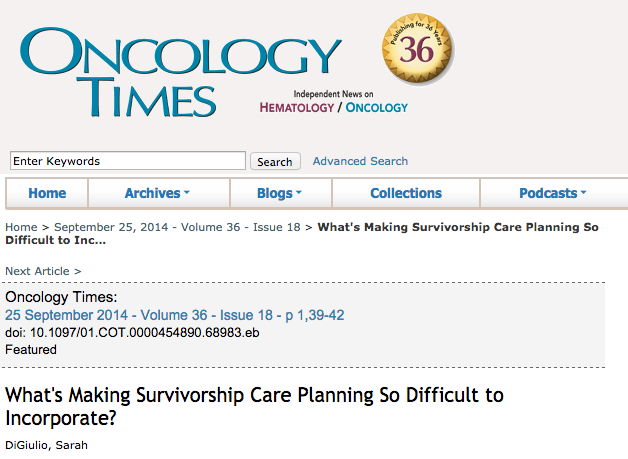
Originally published on Oncology Times.
‘Focus Has Been Off’
Asked her opinion, Carrie Stricker, PhD, CRNP, an oncology nurse practitioner at Abramson Cancer Center at the University of Pennsylvania, said that a big problem with implementing survivorship care plans so far has been that people have lost sight of the real purpose of these plans and placed too much emphasis on the time-consuming process of documenting specific treatment details, rather than determining appropriate follow-up care.
Compiling data for the treatment summary component of a survivorship care plan can take hours, Stricker said—on average 60 to 90 minutes per patient, according to her previous research (Journal of Cancer Survivorship 2011;5:358-370).
“So, providers spend all this time pulling together a personalized treatment summary, telling you exactly what the patient got, but then do not spend time creating a personalized plan for follow-up care for the patient—and for supportive care and education,” she noted.
“We need to swing the pendulum back to focus on getting a summary of just the information needed for the multidisciplinary team—including primary care—to provide care to that patient, and to help the patient understand what he or she needs to do for him- or herself.”

